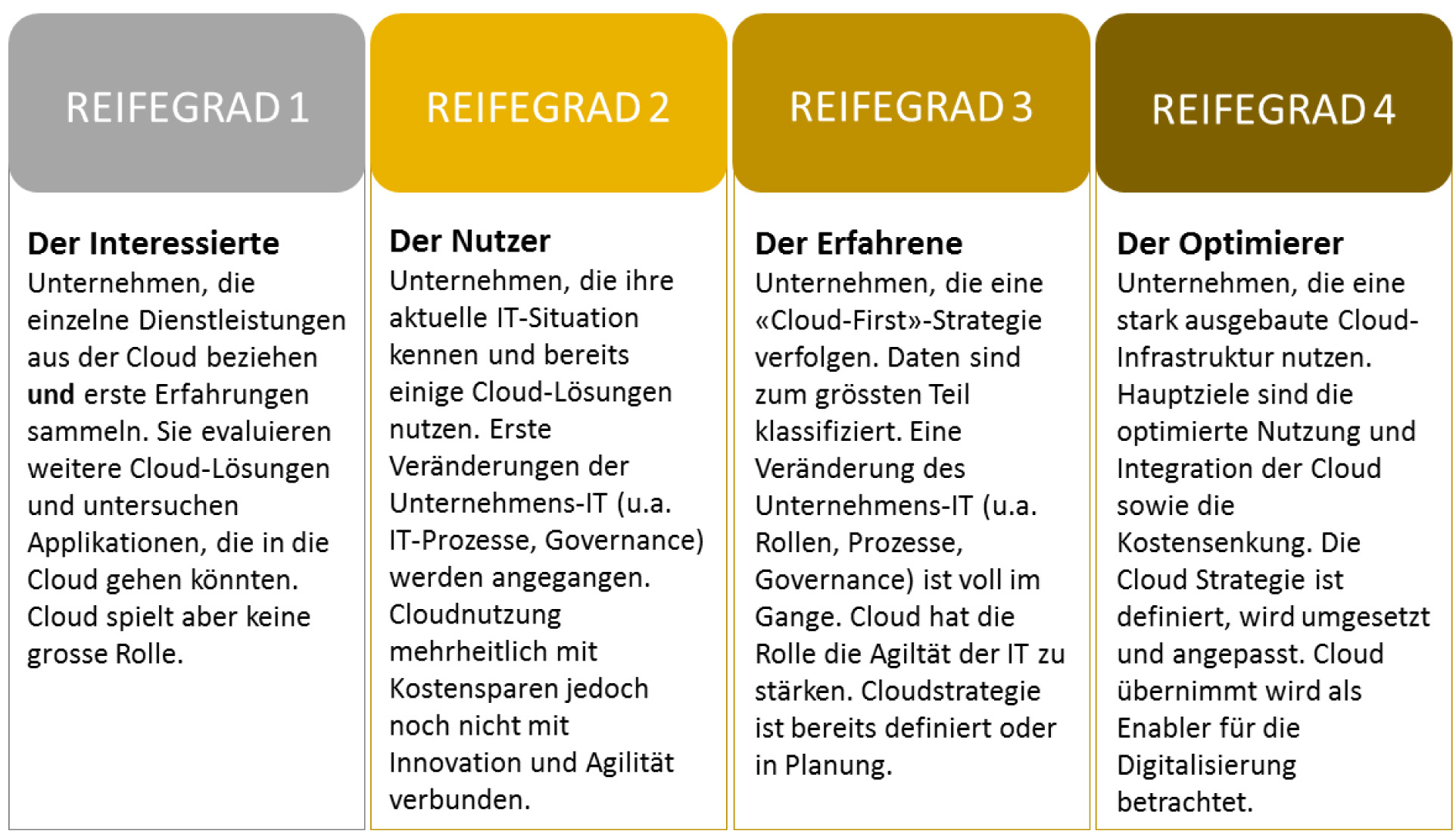Cloud computing: SMEs with high maturity
When it comes to digital transformation, the attitude of the management plays a decisive role. A new study by the FHNW surveyed CIOs on topics related to cloud computing, digitization and transformation.

How is IT preparing to optimally support the company in the digital transformation? How intensively are business and IT working together and what is the motivation for cloud deployment? Is digital transformation really not possible without cloud, or are these terms just marketed together without having anything in common? Such and similar questions were addressed in the study initiated by the Cloud Computing Competence Center of the School of Business FHNW under the direction of Prof. Dr. Stella Gatziu Grivas. CIOs from various industries were surveyed.
The FHNW Matura models as a basis
High-quality results were generated in detailed discussions. The FHNW Cloud Maturity Model and the FHNW Enterprise IT Maturity Model, which are available as online tools, served as a basis. The joint use of the two models provided information about cross-references and interactions between the individual areas.

Smaller companies with higher maturity
The companies surveyed show satisfactory final results for both cloud maturity and corporate IT maturity. A higher level of maturity is clearly evident among the smaller companies. However, companies with between 250 and 1000 employees have some catching up to do. Companies with a high cloud maturity also have an enterprise IT with a high maturity.
Role of management crucial
The majority (approx. 80 percent) of the CIOs surveyed said that digital transformation cannot be achieved without cloud. However, around 10 percent are of the opinion that cloud and digital transformation have nothing in common and are only marketed together. In companies where the management supports the digitization process and provides decisive impetus, cloud technologies are clearly used to make IT more agile and to drive business development. Cloud computing is seen as an innovation driver; cost saving is not the primary goal. The results also show that a strategic positioning of the cloud is underway. Around 2/3 of the CIOs surveyed have defined a cloud strategy which is already being implemented or are in the process of developing it.
Source: www.fhnw.ch/wirtschaft









